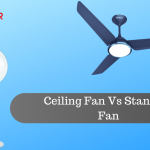An electric switch is a mechanical device that makes or breaks a connection in an electrical circuit. There are so many different types of switches such as rotary, rocker, slide, toggle and the piano type switch. When it comes to switches used in domestic wiring circuits the most common switch you will see and use is the piano type since the key resembles that of a piano. From the outside, the switch looks more or less alike across brands but there are vital differences in material for the body and the metal contacts as well as design that can have a bearing on safety, durability and performance. The Indian market is full of low-grade switches as well as quality switches such as Polycab switches. If you are getting a rewiring or buying a new house and installing fresh wiring it pays to be particular about the choice of switches.
Quality and performance just as important as looks
These days there is more emphasis on harmonizing electrical outlets to be in consonance with interiors and therefore, modular switches rule the roost. However, if you leave it to the wireman he is most likely to get the cheapest he can in order to get more profits. Insist on quality wires as well as best quality branded Havells or Polycab switches from Havells and Polycab dealer in Ahmedabad. It may cost more but quality always pays in more ways than one.
- At one time bakelite was in use but these days ABS or polycarbonate is more widely used. Premium switch manufacturers use fire resistant grade polymers and this means switches will not catch fire.
- The overall design and gap, depth and interior construction also matter since there is a risk of electrocution if water can get inside the switch and come in touch with the contact. This is especially important when you are using switches inside bathrooms and toilets with wet surfaces. Plastic material that resists moisture and has high insulation resistance is the ideal material in switches used in wet areas. Everytime you touch the switch, you exert pressure. Therefore, the material should be of sufficient thickness to handle any pressure and not break. Some people hit the switch hard when annoyed and if it breaks they can be electrocuted by their finger coming in contact with the metal part inside.
- The metal parts such as the spring, screw terminals and contacts also play a vital role. The spring ensures just the right amount of pressure. Hard brass, phosphor bronze, silver plated brass or copper for contacts insure good conductivity and pressure of the spring ensures minimum contact resistance. High contact resistance can lead to heating. Thickness of metal contacts also plays a role in efficient conduction and current handling capacity. The only way you can know that good quality components are used is the brand name of the switch and the ISI mark on it. Cheap switches use iron for screws and contacts. Iron corrodes and it has high contact resistance. Good quality modular switches have a solid on and off action with springs snapping into place effortlessly but without a lot of noise.
Match switch to a load
Most switches used in wall outlets are designed to handle 6 amps for lighting and small appliances. Theoretically, it is possible to attach a 1000 watt load but it is never practically advisable since such small switches get hot under heavy load. If you have a switched wall outlet to which you plan to connect toasters or water heaters or ovens then always insist on 15A switch and socket combo to be on the safer side. Some of the most reliable switches are L and T switches (L&T as the market knows it). Better still, use a miniature circuit breaker here or even better an RCCB switch rated for 15 A.
It is better to be safe than sorry especially in the matter of electrical switches. The only way is to put your trust in the best-trusted brands that have a reputation to maintain. You cannot go wrong when you buy from Polycab and Havells dealer in Ahmedabad.




